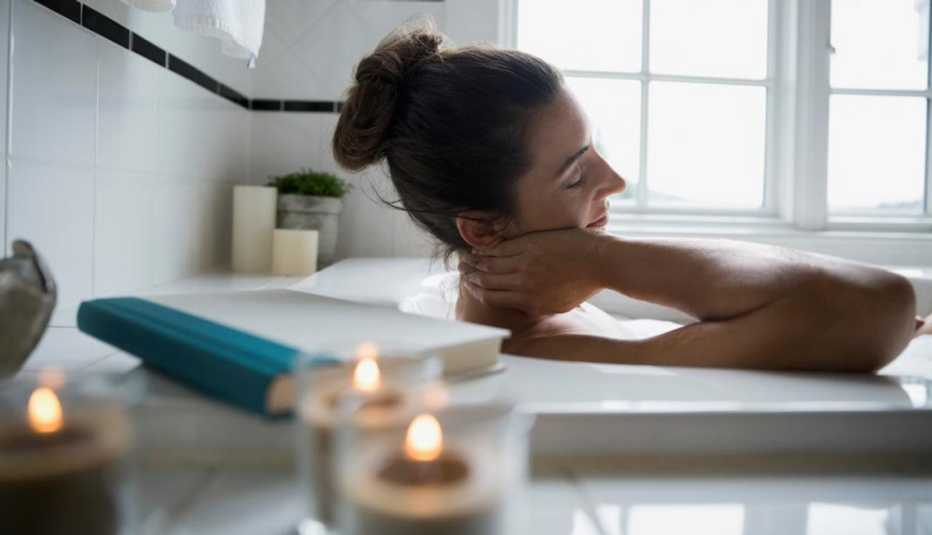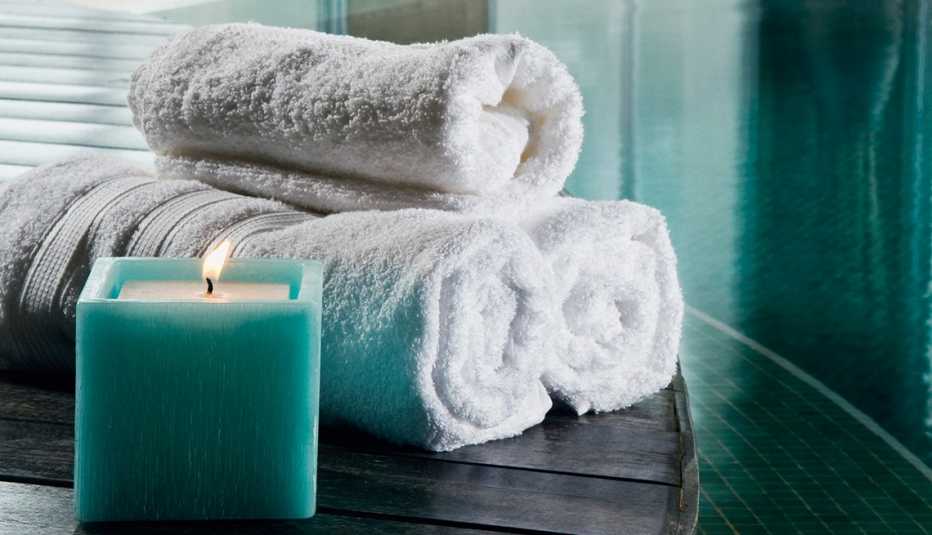Staying Fit


Spa trips renew body and mind—but they can also drain a bank account. The good news: You can create a wellness retreat in your own home by focusing on food, mindfulness, relaxation and exercise. Experts from four spas explain how:
Eat Tasty, Good-For-You Food
The first step to adopting a spa lifestyle at home? Maintaining a well-equipped kitchen, free from processed treats. “Restock your cabinets and fridge with a few healthy staples, and it’s easy to whip up a nutritious, healthy spa-style meal,” says Boston-based nutritionist Tricia Silverman, former director of nutrition at Canyon Ranch in Lenox, Massachusetts. Some tips:


AARP Membership— $12 for your first year when you sign up for Automatic Renewal
Get instant access to members-only products and hundreds of discounts, a free second membership, and a subscription to AARP the Magazine.
Buy the right equipment.
A spiralizer can turn vegetables like carrots and zucchini into slender strands to give an ordinary salad an elegant touch. Also invest in a quality blender to incorporate veggie or fruit smoothies into your diet.
Add "wow" to your water.
Fill a carafe with water and get creative with infusions. Slice lemons or limes or opt for cucumbers or watermelon. “Taking your water up a notch gives it a true spa feeling,” Silverman says.


Trade chips for chickpeas.
Adieu, potato chips and fatty condiments. Silverman urges clients to roast chickpeas—or buy them from her favorite, The Good Bean. "Chickpeas contain protein and fiber, lacking in many processed snacks, and they contain folic acid and other micronutrients that contribute to optimal health," Silverman says. She washes as many as desired, pats dry, mixes lightly with canola oil, and bakes for 40 minutes or until crunchy. Then she adds a dash of cayenne pepper or garlic powder for a kick.
Mix up your snacks.
Veggies like carrots and celery are easy snacks, too. But instead of gloppy veggie dips, opt for organic hummus or nut butters, like almond or cashew, sprinkled with cinnamon for a kick. Another possibility: Make trail mix with pumpkin seeds, sunflower seeds and dried fruits (Silverman likes Turkish apricots or baby bananas), then mix in healthy cheeses like sheep’s milk feta. One more simple snack that packs a big punch? Bing cherries. “Their anti-inflammatory compounds may play a role in treating arthritis and gout,” she says.


































































More on Home and Family
Friends for the Ages
The power of cross-generational, age-defying bonds
The Long Road to Forgiveness
The Charleston church massacre one year later